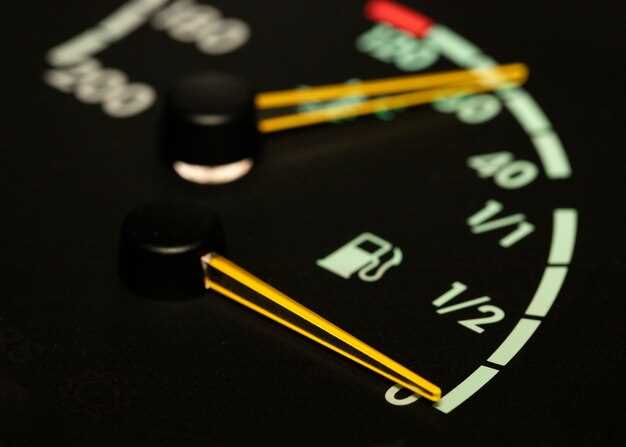
In the competitive world of motorsports, achieving peak performance on the racetrack is essential for success. One of the most critical aspects of enhancing a vehicle’s capabilities lies in engine tuning. This intricate process involves adjusting various parameters of the engine to optimize power output, improve fuel efficiency, and enhance overall drivability. By employing effective tuning strategies, racers can significantly influence their chances of winning.
Engine tuning is not a one-size-fits-all solution; rather, it requires a comprehensive understanding of the engine’s design, the racetrack’s conditions, and the specific goals of the racing team. Different tuning strategies can affect airflow, fuel mixture, ignition timing, and other crucial factors. Effective tuning can lead to increases in horsepower and torque, allowing vehicles to achieve faster lap times and better acceleration.
Moreover, modern technology has revolutionized engine tuning practices, introducing advanced tools such as dynamometers and engine management systems. These innovations enable precise measurements and adjustments, allowing tuners to extract the maximum potential from an engine. Identifying the right combination of modifications and fine-tuning can make the difference between a podium finish and a disappointing performance.
Optimizing Air-Fuel Mixture for Maximum Horsepower
Achieving maximum horsepower in a race engine is heavily dependent on optimizing the air-fuel mixture. The right balance between air and fuel ensures that the combustion process is efficient, which directly impacts an engine’s performance and output. Proper tuning of the air-fuel ratio can significantly enhance horsepower figures and enable an engine to reach its peak potential.
The ideal air-fuel mixture generally trends towards a stoichiometric ratio, which for gasoline typically falls around 14.7:1. However, for racing applications, this ratio can be adjusted based on the engine’s specific requirements, the type of fuel being used, and the modulation of engine load. Richer mixtures (lower air-fuel ratios) can increase power by ensuring more fuel is available for combustion, especially at full throttle conditions. Conversely, a leaner mixture (higher air-fuel ratios) can improve efficiency during lighter load conditions.
Tuning the air-fuel mixture requires precise measurement and control. Utilization of air-fuel ratio gauges and wideband O2 sensors helps in monitoring the combustion process in real-time. Tuning software or engine management systems can adjust the fuel injectors’ pulse width, thereby controlling the quantity of fuel delivered to the combustion chamber based on the engine’s air intake. This feedback loop allows for dynamic refinement of the air-fuel mixture tailored to different RPM and load conditions.
Another critical aspect of tuning involves the consideration of environmental factors. Changes in temperature, altitude, and humidity can influence the density of air entering the engine, thus affecting the air-fuel ratio. A well-tuned engine is one that can adapt to these changing conditions, maintaining an optimal mixture across various settings.
Moreover, the choice of intake and exhaust components plays a crucial role in achieving the best air-fuel mixture. High-performance air filters, larger throttle bodies, and optimized exhaust systems can enhance airflow, allowing for better mixing with fuel. This improved airflow not only supports a richer mixture but also helps in expelling exhaust gases more efficiently.
In conclusion, optimizing the air-fuel mixture is fundamental for maximizing horsepower in race engines. Through careful tuning strategies that include monitoring ratios, adapting to environmental changes, and enhancing airflow dynamics, racers can unlock their engine’s full potential, achieving the competitive edge necessary for winning performance.
Advanced Ignition Timing Adjustments for Enhanced Throttle Response

Optimizing ignition timing is a crucial element in engine tuning that directly impacts performance and throttle response. Achieving the right timing ensures efficient combustion, leading to maximum power generation and throttle sensitivity. Advanced adjustments can significantly enhance these characteristics, particularly in high-stakes racing environments.
Ignition timing refers to the moment when the spark plug ignites the air-fuel mixture within the combustion chamber. By fine-tuning this timing, tuners can influence engine behavior across various RPM ranges. Early ignition can lead to improved low-end torque, while delayed ignition often enhances high-RPM performance. Finding the optimal balance is key to achieving a responsive throttle.
Different tuning strategies can be employed to refine ignition timing. One method involves utilizing a wideband O2 sensor to gather real-time data on air-fuel ratios. This information allows tuners to make precise adjustments, ensuring that combustion occurs at the most effective point within the stroke. Additionally, using knock sensors can prevent pre-ignition and detonation issues, which can arise from aggressive timing adjustments.
Implementing a programmable engine management system enables more sophisticated timing strategies. These systems allow tuners to map ignition timing based on multiple variables, such as engine load, temperature, and RPM. Such versatility ensures that the engine remains responsive under varying driving conditions, enhancing overall performance.
Moreover, turbocharged or supercharged engines often demand specific ignition timing strategies. When boost levels increase, adjustments to ignition timing become critical in preventing knock and maintaining reliability while maximizing power. Tailoring the ignition map for these engines can result in significant gains in throttle response and acceleration.
Advanced ignition timing adjustments not only contribute to performance but also impact fuel efficiency. An optimally timed engine burns fuel more completely, leading to better mileage without sacrificing power. This fine-tuning aspect is essential for drivers seeking to balance speed with operational costs.
In conclusion, advanced ignition timing adjustments are a vital part of engine tuning strategies for winning race performance. By leveraging data-driven approaches and modern engine management technologies, tuners can achieve enhanced throttle response and improved overall performance. Successful implementation of these strategies can set a vehicle apart on the racing circuit.
Selecting the Right Performance Parts for Engine Longevity

Choosing the right performance parts for your engine is essential not only for maximizing power output but also for ensuring long-term durability and reliability. Many enthusiasts often overlook the impact of performance modifications on engine longevity, leading to premature failures and costly repairs.
When selecting performance parts, consider components that enhance efficiency and reliability. High-quality forged pistons, for instance, offer superior strength compared to stock options, allowing the engine to handle increased stress without compromising longevity. Similarly, investing in a high-performance crankshaft can significantly enhance overall engine stability, contributing to a longer lifespan.
Another critical aspect is the selection of performance camshafts. Opting for camshafts designed for smoother power delivery can prevent excessive wear on engine internals, as they promote better ventilation and combustion, which leads to reduced operating temperatures. This reduction in heat is vital for maintaining engine integrity over time.
Incorporating advanced engine management systems can also play a key role in extending engine life. These systems adjust fuel mapping and ignition timing dynamically, optimizing performance while minimizing stress on the engine. A well-tuned engine runs smoother and cooler, which directly contributes to its longevity.
Furthermore, consider upgrading the engine’s cooling and lubrication systems when adding performance parts. A more efficient radiator and high-flow oil pump can aid in maintaining optimal temperatures and pressure levels, which are critical for engine health. Additionally, using synthetic lubricants can provide better protection under high-performance conditions, significantly enhancing part durability.
Lastly, it is vital to ensure compatibility among all performance parts. Mismatched components can lead to increased friction, heat, and ultimately engine failure. Engaging in thorough research and consulting with professionals can help in selecting a cohesive set of upgrades that work seamlessly together, promoting both peak performance and longevity.



